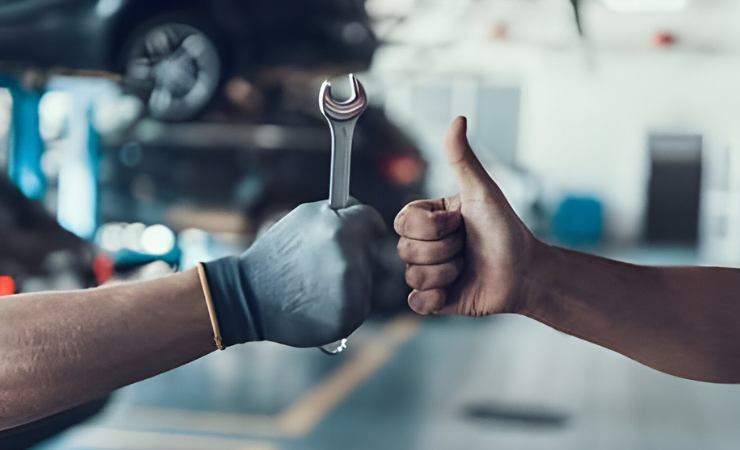Regular vehicle maintenance through servicing and annual MOT tests are essential for keeping your car safe, legal, and running smoothly. But what exactly sets an MOT apart from a service? And why do you need to stay on top of both? Let’s break it down!
What is an MOT Test?
Think of an MOT as your car’s yearly health check-up required by law in the UK. Once your vehicle is over 3 years old, it needs to pass this annual examination to prove it meets legal standards for safety and roadworthiness. During the MOT, a certified tester will thoroughly inspect all the critical components of your car, including:
- Brakes
- Steering
- Suspension
- Lights
- Tyres
- Seatbelts
- Exhaust system
- Windscreen wipers and washers
If any faults or excessive wear and tear are found that don’t meet the strict guidelines set by the Driver and Vehicle Standards Agency (DVSA), your car will fail the MOT. You’ll need to fix those issues and have the car re-tested before you can legally hit the road again.
Also read: Electric Cars and MOT
Here is a table comparing key aspects of MOT tests and vehicle servicing:
| MOT Test | Service | |
| Purpose | Annual safety and roadworthiness inspection required by law | Routine maintenance to keep the vehicle running well and prevent issues |
| Frequency | Routine maintenance to keep the vehicle running well and prevent issues | Varies – interim (6 months), full (12 months) or per manufacturer recommendations |
| What’s included | – Visual inspection of all vehicle components related to safety (brakes, steering, suspension, seatbelts etc.) – Confirmation parts meet legal condition standards | – Oil and filter changes – Top up vehicle fluids – Check and replace worn parts (spark plugs, wipers etc.) – Test battery, brakes, lights and more |
| Outcome | Yes – the vehicle must pass MOT to legally drive on roads | No pass/fail – maintenance and repair recommendations provided |
| Approval Needed? | No legal requirement but it is highly recommended by manufacturers | No legal requirement but highly recommended by manufacturers |
| Who Conducts | DVSA-approved garages and test centres | Any qualified mechanic or garage |
| Cost | Test fee only (repairs not included) | Labour and parts costs, vary by vehicle and work done |

What is vehicle servicing?
If an MOT is like a health check-up, think of a service as your car’s regular tune-up and TLC session. It covers all the vital routine maintenance needed to keep your vehicle running reliably and efficiently. A typical service includes:
- Oil and filter changes
- Topping up brake, coolant and windscreen fluids
- Checking battery, tyre and exhaust condition
- Testing ignition, emissions and fuel systems
- Replacing spark plugs, air filters and other wearing parts
While MOT tests check the current condition of your car, services perform vital maintenance to minimize the risk of future problems.
Types of Vehicle Services
There are a few different types and levels of car services:
- Interim service – Basic maintenance every 6 months/6,000 miles
- Full service – Comprehensive checks and repairs annually/12,000 miles
- Manufacturer service – Routine maintenance recommended by your vehicle’s automaker
Why Combine MOT and Servicing?
Having both an MOT and service performed together in a single appointment provides several advantages:
| Benefit | Explanation |
| Convenience | Complete two vital maintenance tasks in one appointment rather than separate trips |
| Early Detection of Issues | Diagnose and repair problems during the service before the MOT inspection. Increases chances of passing MOT. |
| Cost Savings | Garages often offer discounted rates when booking MOT and service together as a package. |
| Synchronized Schedule | Schedule annual service dates to align with MOT renewal time each year. |
How to Find a Reputable Garage?
Choosing an accredited garage with qualified mechanics is key for quality servicing and MOT testing:
- Look for industry certifications like IMI, Bosch, GoodGarage
- Verify garage is approved for MOT testing
- Check online reviews and ratings
- Ensure expertise with your vehicle make and model
Getting quotes from multiple garages is advisable before comparing options and authorizing repairs.
DIY Checks Between Services
While major work should be left to professional mechanics, there are visual inspections and checks any car owner can perform monthly to stay on top of maintenance:
- Check oil, coolant and windscreen wash fluid levels
- Inspect tyre tread depth and pressure
- Test brake pad thickness by looking through the rim spokes
- Ensure wiper blades are clearing the windscreen cleanly
Performing these quick checks helps spot low fluid levels, leaks or damage early before problems worsen. Topping up screenwash and pumping tyres takes just minutes and can prevent issues.
Risks of Skipping Servicing
We get it – it’s tempting to skip a service now and then to save a few quid in the short term. But trust us, neglecting that routine maintenance will almost always come back to bite you in the form of more expensive repairs down the line:
- Engine and transmission wear accelerates
- Brakes, tyres and other safety-critical components deteriorate
- Increased breakdowns and costly roadside recovery fees
- Difficulty selling a car without proof of regular servicing
MOT testing and servicing combined provide comprehensive preventative vehicle care to give you peace of mind your car is legally roadworthy and well-maintained. Scheduling both appointments together annually maximizes convenience while minimizing costs. Don’t defer essential maintenance – book your next MOT and service today!
